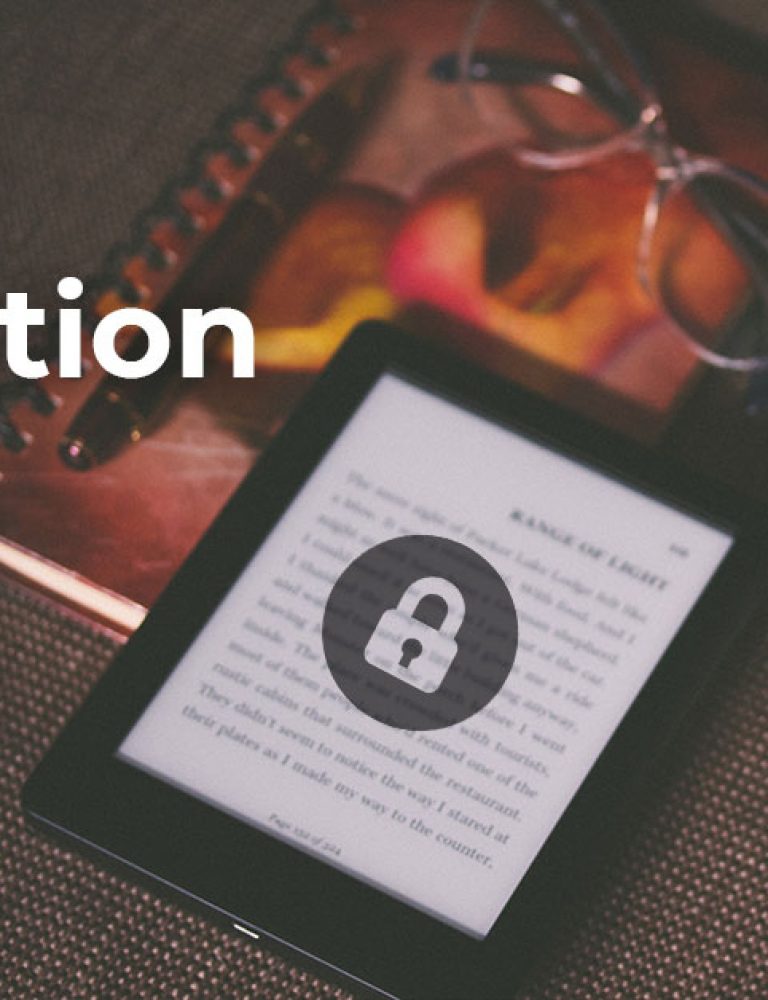Ever seen one of those videos where a toddler is holding a phone upside down and pretending to talk? Well, they sure are cute, but what you need to really notice here is that they are already familiar with how to use a smartphone! They know they can talk through it and that when you press certain keys something moves across the screen, and there’s light and sound coming from within. Basically, there’s interaction happening, and that is what attracts them towards a mobile phone.
Now take the phone away and give them a storybook. What do you think they would rather prefer? An interactive and responding device or a book that doesn’t do much?
Schools and universities understand the power of digital technology that kids find so appealing. Slowly but surely, they have realized that smartphones and tablets can also be utilized for educational purposes, and that’s how etextbooks became mainstream. Today there are many educational institutes that have incorporated etextbooks as part of their curriculum.
Let us have a look at some of the features that make etextbooks the preferred choice for students and teachers –
1. Improves Motivation Through Gamification
2. Provides Real-World Experience Through Simulations
3. Access to Additional Learning Resources Through Content Library
4. Provides Immersive Learning Experience Through Augmented Reality
5. Gives In-depth Performance Reports Through Analytics
6. Allows Multi-sensory Learning Experience Through Read Aloud
7. Enables Interactivity Through Highlight, Annotate & Bookmark Features
8. Makes Finding Texts Easy Through Search Option
9. Learn New Words Through Online Dictionary
10. Test Knowledge Through Interactive Quizzes
11. Easy on The Eye with Font Adjustments and Night Reading Mode
12. Allows Interaction Through Videos and Animation
Are eTextbooks The Next Big Thing?
There are academics who are of the opinion that digital technology cannot beat traditional learning methods. Well, no method is free of flaws, but the trick is to overcome these flaws and optimize them to produce maximum output. Here’s more on Is Online Education Better than Traditional Education?
When it comes to etextbooks, it can be enhanced in so many different ways to keep the flaws at bay. When we talk of providing the best quality education to K-12 students, it also involves giving a good learning experience along with good quality educational content. Students from K to 12th grade are no strangers to the presence of technology around them.
So, there’s really no point in keeping them away from digital devices. Educational institutes and publishers are using this technology to their advantage by delivering educational content on tablets and laptops.
Given the number of enhancements and features that can be added to an etextbook to make it more engaging and immersive for students, we can conclude that etextbooks are really the next big thing in K-12 education. These digital textbooks act as a holistic learning device with its numerous interactive features.
1. Improves Motivation Through Gamification
You know how online gaming works- you keep playing, earn points, move on to the next level, get more reward points and bonus features, proceed to the next level. The same principles are now being applied to learning materials.
By including gamification techniques, students are given points for completing assignments on time, scoring well in quizzes etc. Gamifying the content gives them a sense of achievement and motivates them to earn more points by performing well in their tasks.
2. Provides Real-World Experience Through Simulations
Playing out real-world scenarios online adds a fun aspect to the learning process. In a simulated exercise, students can choose options and make decisions to determine the course of action. The best thing about simulations is that students have a chance to reset and re-do the entire thing if the choices made by them are wrong and are not leading to the desired result.
For example, students can mix various chemicals in a virtual lab to see the effects of each concoction, irrespective of whether it’ll change color or explode the test tube. This helps them learn from their mistakes and also inculcates quick thinking and better decision-making skills.
3. Access to Additional Learning Resources Through Content Library
Some publishers provide a digital content library, consisting of thousands of learning videos that students can browse through to find the topic that’s relevant to them. Videos are an effective means of learning, and a repository full of learning videos gives students the choice to look for one relating to every concept.
These videos are often made by subject matter experts and are customized for different grades. These videos act as an additional learning material that helps them understand concepts quickly and effectively.
4. Provides Immersive Learning Experience Through Augmented Reality
Augmented reality in education takes learning to the next level. It enhances an object or an image and projects interesting facts about them on the device screen. Augmented reality blends real environment with the digital one, making learning more immersive for students.
AR is great for subjects that require in-depth understanding such as science and math. It is also a good resource to teach history and geography as it can present an enhanced view of the place or monument on screen, complete with hyperlinks and the ability to turn the image around and have a 360-degree view.
5. Gives In-depth Performance Reports Through Analytics
eBooks have built-in analytics that tracks the performance and activities of the user. In this case, teachers can have a detailed insight of student reports. Analytics gives out the number of students who opened a particular chapter, number of videos viewed, and the average time spent on each chapter/video etc. This report helps teachers to measure the level of engagement.
6. Allows Multi-sensory Learning Experience Through Read Aloud
Read aloud lets students listen to the content. This feature is especially helpful for students who do not have English as their first language. It helps them learn pronunciations and improve their diction. It also is a great help for students with dyslexia, reading challenges, or visual impairments.
7. Enables Interactivity Through Highlight, Annotate & Bookmark Features
eTextbooks have all the features of a regular eBook. It lets students highlight texts, make notes for self-reference and bookmark pages for future reference. Students can also share the notes with their teachers and peers.
8. Makes Finding Texts Easy Through Search Option
Digital textbooks also provide you with a search feature, making it easy for students to search through the book for texts. They do not have to manually skim through pages to find that one paragraph. Here’s more on How to Use Digital Textbooks in the Classroom
9. Learn New Words Through Online Dictionary
If students do not know the meaning of certain words, they have the option of looking them up on the online dictionary.
Whitepaper:
The State of Digital Content in Global K-12 Education
10. Test Knowledge Through Interactive Quizzes
Online quizzes are set for students to gauge their knowledge. Teachers can also have access to these quiz scores. Quizzes can be added in between chapters or at the end of each chapter or both. Teachers can also set up quizzes and assignments for the whole class, evaluate their performance and give out results online.
11. Easy on The Eye with Font Adjustments and Night Reading Mode
The font style and size on the eBook can be changed as per the personal preference of the user. It also provides an option to switch to night reading mode where one can easily read the texts in the dark without straining their eyes.
12. Allows Interaction Through Videos and Animation
The reason etextbooks are more popular is because they allow you to add videos and animation to the content, unlike a PDF or Word document. Videos are a more effective way of capturing student’s attention.
13. Saves Cost as Digital Books Are Cheaper
Digital textbooks are cheaper compared to traditional textbooks. Textbook prices have increased by more than 1000% over the past 30-40 years. This is due to the long list of processes involved in creating a print textbook. As eBook creation tools are simple to use and manage, the cost of book creation decreases significantly. Moreover, with options like eBook renting and subscriptions, students can now afford etextbooks at more affordable rates.
14. 24x7 Access with Offline Reading
The content is usually stored on secure cloud-based servers, which means in order to operate an eReader, you require an internet connection. But eReaders also allows the user to download the etextbook for later use. This way, students can always have access to the content even in the absence of internet.
Using an etextbook has the following advantages:
- Students can access content from any device, any time
- Increases engagement with the learning materials
- Educational institutes can repurpose content
- Less expensive than textbooks
- Cloud-based content allows the module to be updated anytime
An etextbook is beneficial in many ways, both to the teacher and the student. It helps students to understand and learn better, and at the same time helps teachers to monitor the students’ performance and provide appropriate help to help them succeed.
Digital learning offers the perfect blend of interaction and engagement to keep the learners interested, enhancing their learning experience. With the growing popularity of digital learning on a global scale, we can safely conclude that etextbooks are in fact the next best thing in K-12 education.
Related:
DISCOVER HOW AN INTERACTIVE EBOOK PUBLISHING & DELIVERY PLATFORM CAN HELP YOU
Kitaboo is a cloud-based content platform to create-publish & distribute interactive mobile-ready ebooks.
You May Also Like









